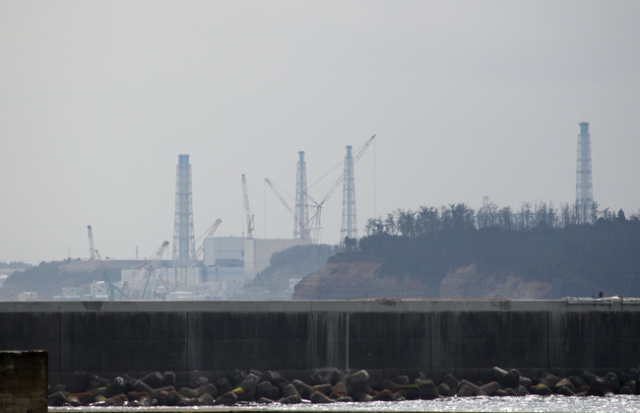Marcus Atkinson, international coordinator of Footprints for Peace, a global community dedicated to creating change through peaceful action, has organised numerous events in Australia and elsewhere to highlight the dangers of nuclear technology, both military and civilian. He has recently “returned to Australia after spending two weeks in the evacuation zone near Namie, Odaka & Futaba plus the surrounding towns in Minamisoma in Japan’s Fukushima prefecture.” These are his reflections from his trip in which he is strongly critical of Australia’s role in the whole affair of the triple meltdown of 2011. We reproduce this article with permission of the author.
What I witnessed has left me saddened and deeply troubled by Australia’s role in this ongoing tragedy.

There is an ongoing and seemingly impossible attempt to decontaminate an area one quarter the size of Tasmania with close to two million people and the tragedy has tested and torn the social fabric of the region.

Entering exclusion zone
It is now five years since the meltdown of multiple reactors at the Tokyo Electric Power Corporations Fukushima nuclear power plant and Australia continues to ignore the very serious role we have played in supplying the material that has contaminated so many cities, towns and farming land.
6 months after the meltdown it was formally confirmed to the Australian parliament that not only was Australian uranium routinely sold to TEPCO but that yellowcake from Australia was fuelling the Fukushima complex at the time of the meltdown.
The radioactive contamination that continues to be a poisonous presence throughout this area began its journey to Fukushima from the sacred Aboriginal lands of Australia. Whether it came from Rio Tinto’s Ranger or BHP Billiton’s Olympic Dam mine this uranium came from country where Traditional Owners actively fought against it being mined. It has been deeply troubling for these communities to know that uranium from their country has directly fuelled this disaster after fighting so hard and so long to keep that uranium in the ground.
In Fukushima prefecture there are currently over 10.3 million individual bags of radioactive waste stored at over 128,000 sites. There are tens of thousands of these bags on the side of roads, city streets and people’s houses – waiting for the trucks to come and pick them up.

Storage site for waste
While all this decontamination work continues in Fukushima the Australian government has stuck its head in the sand. In September 2011 the UN Secretary General Ban Ki Moon urged all uranium producing nations to assess the environmental and community impacts of uranium mining.
There has been no investigation or inquiry in to whether we should be involved in an industry that has made an area uninhabitable, torn families apart and created over 150,000 nuclear refugees.
Instead the Australian Government’s response to this tragedy has been to further weaken and undermine Australian safeguards by signing a deal to sell uranium to India – a country that refuses to sign the Nuclear Non Proliferation Treaty and the Comprehensive Test Ban Treaty, has a shocking safety record and close ties between its civilian and military nuclear programs. This decision directly ignored the advice of senior former Australian nuclear bureaucrats and experts and the Parliament’s own Treaties Committee.
In South Australia the response to Fukushima has not been a review of the impacts of BHP Billiton’s Olympic Dam mine but rather a Royal Commission into how to expand the nuclear industry.
With schools, kindergartens, shops and many areas throughout Fukushima still waiting to be decontaminated it is time for Australia to take a step back and a look forward. We need to contemplate the impacts of our involvement in the nuclear trade beyond the rhetoric of jobs and money.

Incinerator for waste under 8000 becquerels per kg
We have an obligation to future generations both here in Australia and overseas. There is no need or justification for us to be furthering this dirty, dangerous and expensive industry that can make vast areas of land uninhabitable and water unreliable.
Australia has the ability and opportunity to lead the world in renewable energy – the world’s fastest growing energy sector. It is time for Australia to have a true debate about our role in the worlds future energy supply and what kind of world we want to create and pass on for our children and future generations.
Below are some video interviews with locals along with some footage of the area..
Walking to Namie (including evacuation zone)
Interview with Tokuun Tanaka (monk from Namie area)
Interview with Shoich Shoji and Kimiko Sugiyama (Organic farmers)










